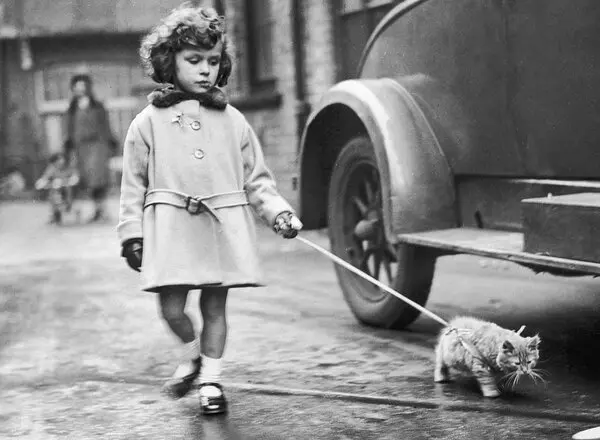In recent instances, the word “sassy little brat nyt” has garnered interest, mainly inside the pages of the New York Times (NYT). This phrase, often used to describe a baby or younger individual displaying ambitious, outspoken, and particularly defiant behavior, has sparked numerous debates and discussions within the realms of parenting, schooling, and societal norms. This article delves into the cultural implications of the “sassy little brat,” exploring its portrayal within the NYT, its societal effect, and the wider conversations it has ignited.
Defining the “Sassy Little Brat”
The period “sassy little brat nyt” combines distinct traits: sassiness and brattiness. Sassiness refers to an ambitious and cheeky mindset, regularly visible as endearing and lively. On the other hand, brattiness implies spoiled and unruly conduct, usually viewed negatively. When mixed, these developments depict a young person who’s both outspoken and defiant, with hard authority and conventional norms.
NYT’s Portrayal and Analysis
The New York Times, recognized for its in-depth cultural analysis and statement, has featured the “sassy little brat nyt” in numerous contexts. Through opinion pieces, parenting columns, and societal reviews, the NYT has explored the consequences of raising children with such traits.
Parenting Challenges: One recurring theme within the NYT is the mission parents face in dealing with sassy conduct. Articles regularly speak the great line between nurturing a child’s self-belief and ensuring they expand respect and empathy. The “sassy little brat” becomes an image of this sensitive stability, with Dad and Mom navigating between fostering individuality and curtailing unwanted behavior.
Educational Impact: The sassy little brat nyt additionally examines how educators cope with sassy and brattish conduct in the school room. Discussions revolve around disciplinary measures, the significance of know-how underlying issues, and the function of educators in shaping a baby’s mindset. The portrayal of sassy youngsters in instructional settings highlights the need for persistence, innovative coaching strategies, and a supportive environment.
Cultural Reflection: In a broader cultural statement, the NYT displays how society’s converting values impact the notion of sassiness. As traditional norms evolve, what changed into as soon as considered brattiness might also now be visible as assertiveness. The “sassy little brat” thus turns into a lens through which societal shifts and generational differences are examined.
Societal Impact and Reactions
The discussions within the sassy little brat nyt have sparked diverse reactions from readers and professionals alike. Some view the “sassy little brat” as a fine archetype, representing strong-willed and unbiased children who will develop into confident adults. Others see it as a sign of a deteriorating field and appreciate it among more youthful generations.
Positive Reception: Proponents sassy little brat nyt argue that sassiness is a sign of self-belief and self-expression. They agree that encouraging such trends can lead to empowered people who are unafraid to speak their minds and assign injustices. For them, the “sassy little brat” is a destiny chief inside the making.
Criticism and Concern: Critics, but, explicit challenge sassy little brat nyt over the potential for sassy conduct to morph into disrespect and entitlement. They fear that without the right steering, these children may struggle with authority and societal norms, main to problems in their personal and expert lives.
Balanced Perspectives: Many readers and commentators are seeking a balanced method, advocating for a parenting and educational style that embraces sassiness at the same time as instilling essential values like appreciation, empathy, and responsibility. They emphasize the importance of context and personal differences, recognizing that what works for one child might not work for any other.
The Role of Media and Pop Culture
The media, together with the NYT, plays a considerable position in shaping perceptions of the “sassy little brat nyt.” Through articles, opinion portions, and capabilities, the portrayal of sassy kids impacts public opinion and sparks wider cultural conversations.
Television and Movies: Pop tradition often sassy little brat nyt characters, showcasing them as witty, charming, and resilient. Shows and movies proposing such characters contribute to the normalization and even birthday celebrations of sassiness.
Social Media Influence: Platforms like Instagram and TikTok enlarge the presence of sassy kids, with viral movies and posts portraying them in a funny and endearing light. This social media portrayal can both reinforce wonderful perceptions and highlight the challenges of dealing with such behavior.
Literature and Parenting Books: Books and literature on parenting offer various views on coping with sassy behavior. Some advocate for embracing and channeling sassiness into advantageous developments, whilst others provide strategies for curtailing unwanted conduct.
Future Implications
As society continues to evolve, the discourse around the “sassy little brat” will likely persist. The sassy little brat nyt together with different influential media retailers, will continue to form and replicate this conversation, influencing parenting practices, educational approaches, and societal norms.
Evolving Norms: The perception of sassy little brat nyt will keep shifting with societal values. As inclusivity and man or woman expression grow to be more distinguished, the trends associated with the “sassy little brat” may be increasingly valued.
Parenting and Education: Future strategies for parenting and training will probably contain insights from those discussions, striving for a balance that nurtures self-belief whilst fostering appreciation and empathy.
Cultural Dialogue: The ongoing speech will make contributions to a broader knowledge of baby development, persona trends, and the various approaches wherein kids can be guided to become nicely-rounded people.
Conclusion
The “sassy little brat nyt” as discussed in the New York Times represents a complex interplay of attitudes, behaviors, and societal values. Through its portrayal in various contexts, the NYT has sparked essential conversations approximately parenting, training, and cultural norms. As society continues to navigate these discussions, the balance between nurturing sassiness and instilling important values will remain an essential attention for mothers and fathers, educators, and the wider network.
